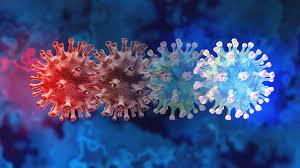Since December 2020, various new strains of the COVID-19 virus have been detected in the US and other parts of the world. The CDC classifies these strains into two groups: variants of concern and variants of interest. Michigan Tech recently sent out an email notifying students of one of these variant’s detection in Houghton county, and encouraged many students to get tested for COVID-19 as soon as possible. In light of these new developments, it is important to be aware of what these variants are and how they compare to the original strain of COVID-19.
Variants of Concern
The CDC identifies five different variants that have been detected in the US in the past few months that pose concern over their treatability. The first of these is called B.1.1.7, and it was first identified in December 2020. This variant was initially detected in the UK, and has an increased rate of transmission of about 50%. It also has a higher rate of fatality so far and is classified by the CDC as a variant of concern because it has not spiked in cases yet. This variant has a minimal impact on treatability with antibiotics and has little difference from the original strain in regards to treatability with vaccinations. Another strain classified as a variant of concern is B.1.351. This variant is also 50% more contagious, but it resists vaccinations and antibiotics at a more moderate level than B.1.1.7. Additionally, B.1.427 and B.1.429 are 20% more transmissible, and they resist vaccinations at a moderate rate. However, these two similar variants significantly resist any antibiotics previously used to treat COVID-19. Variant P.1 is less common; it is moderately treatable with antibiotics, and it shows the least amount of resistance to vaccinations out of the new variants.
Variants of Interest
These strains identified by the CDC are different because not much is known about their treatability yet. These variants have also been found in significantly fewer cases in the US. Variants identified are Variants P.2, B.1.525, and B.1.526. Variant P.2 was found in Brazil in April 2020, Variant B.1.526 was found in New York in November 2020, and Variant B.1.525 was found in New York in December 2020. All three of these strains can potentially reduce antibiotic treatments and vaccination effectiveness. They are currently being monitored to determine whether they truly are less treatable, and whether they are more severe than variants of concern and the original strain of COVID-19. However, they carry some similar genetic markers to variants of concern that have led the CDC to believe that their spread should be documented just as closely so that more is known about them sooner.
All information in this article and further details are available at these two sites:
https://www.cdc.gov/coronavirus/2019-ncov/cases-updates/variant-surveillance/variant-info.html
https://www.cdc.gov/coronavirus/2019-ncov/transmission/variant.html





